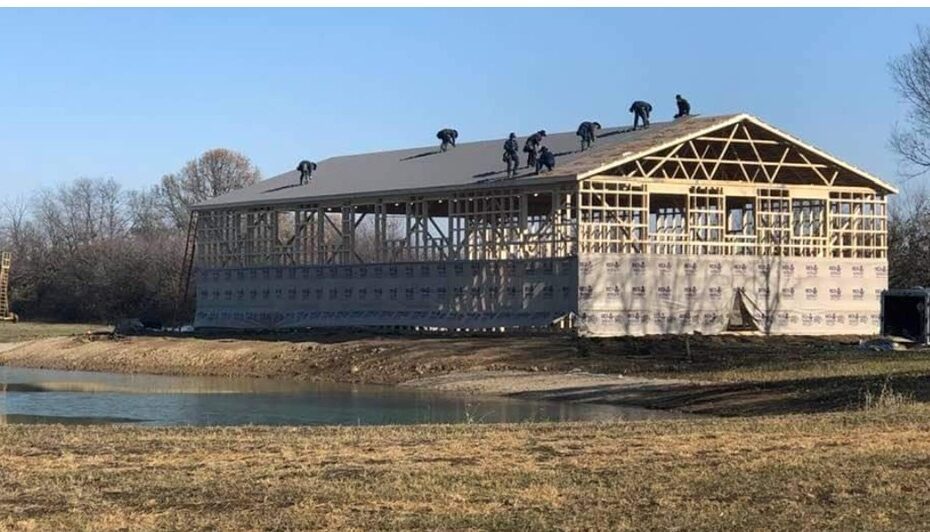Understanding pole barn insulation
Pole barn insulation helps regulate temperature and reduce energy costs. Insulation materials like fiberglass, spray foam, or reflective foil are commonly used to insulate pole barn ceilings. Proper insulation can prevent condensation and moisture buildup, protecting the barn from potential damage. Ventilation is crucial to allow air movement and prevent moisture buildup. Insulating the ceiling with the appropriate material can provide a more comfortable environment and protect stored items from extreme temperatures.
Benefits of insulating a pole barn ceiling
Insulating a pole barn ceiling brings several benefits. It helps in maintaining a consistent temperature inside the barn, reducing the financial expenditure on heating and cooling. Additionally, insulation can prevent condensation buildup, which in turn helps in protecting the stored items and livestock from moisture-related damage. Insulating the pole barn ceiling also provides soundproofing, making the space quieter and more comfortable.
Different insulation materials for pole barn ceilings
Fiberglass, foam board, and spray foam are popular insulation materials for pole barn ceilings. Fiberglass insulation is affordable and easy to install, but it may sag over time. Foam board insulation is rigid and provides good thermal resistance, but it can be more expensive. Spray foam insulation can expand to fill gaps and provides high R-value, but it requires professional installation and can be costly. Consider the climate in your area and your budget when choosing the insulation material for your pole barn ceiling.
Factors to consider before insulating
Before insulating your pole barn ceiling, it’s important to consider a few factors. Here are some things to keep in mind:
- Moisture Control: Pole barns can be susceptible to moisture issues, so it’s crucial to address any existing moisture problems before insulating. Consider installing a vapor barrier to prevent condensation and moisture buildup within the insulation.
- Ventilation: Proper ventilation is essential for regulating temperature and preventing moisture accumulation. Ensure that the pole barn has adequate ventilation to allow for air circulation and prevent heat buildup in the ceiling space.
- Insulation Type: Select an insulation material that is suitable for your climate and intended use of the pole barn. Consider factors such as R-value, fire resistance, and ease of installation when choosing insulation for the ceiling.
- Fire Safety: Be mindful of fire safety regulations when insulating a pole barn. Check local building codes to ensure that the chosen insulation material meets fire safety standards for the intended application.
By considering these factors before insulating your pole barn ceiling, you can ensure that the insulation will effectively contribute to temperature control and provide a comfortable environment within the structure.
Step-by-step guide to insulating a pole barn ceiling
Insulating a pole barn ceiling is a crucial step in maintaining a comfortable and energy-efficient environment inside your pole barn. By following a step-by-step guide, you can ensure that the insulation process is done correctly to prevent heat loss in the winter and heat gain in the summer. Start by assessing the current condition of the ceiling and determining the most suitable insulation material for your specific needs. Then, plan the installation process to ensure even coverage and minimal gaps. Proper insulation can help regulate the temperature inside the pole barn while reducing energy costs.
Tools and materials needed for insulation
Before beginning the insulation process for your pole barn ceiling, it’s important to gather all the necessary tools and materials. You will need insulation materials such as fiberglass batts or foam board, protective gear including gloves, goggles, and a face mask, measuring tape to ensure accurate cuts, utility knife for slicing the insulation, and duct tape or stapler to secure the insulation in place. Additionally, make sure to have a ladder or scaffolding for easy access to the ceiling, and a flashlight for better visibility in darker areas. Proper preparation with the right tools and materials will ensure a smooth and successful insulation process.
Ensuring proper ventilation
It’s crucial to make sure your pole barn has proper ventilation to prevent moisture build-up and maintain air quality. Here are a few important things to consider when insulating your pole barn ceiling:
- Proper ventilation helps to prevent condensation and mold growth
- Consider installing ridge vents and eave vents for adequate air circulation
- Keep the insulation from blocking the vents to maintain airflow
- Ensure that the insulation does not compromise the effectiveness of the ventilation system
Common mistakes to avoid when insulating
When insulating your pole barn ceiling, it’s important to avoid common mistakes to ensure effective insulation. Here are some key mistakes to avoid:
- Underestimating the insulation needs: Make sure to calculate the right amount of insulation needed for your pole barn to avoid insufficient coverage.
- Ignoring air sealing: Overlooking the importance of air sealing can lead to air leaks, reducing the insulation’s effectiveness.
- Using the wrong insulation type: Selecting the appropriate insulation material for your pole barn’s ceiling is crucial for optimal results.
- Poor installation: Improperly installing the insulation can result in gaps, compression, or gaps, which can compromise its effectiveness.
By avoiding these common mistakes, you can ensure a well-insulated and energy-efficient pole barn.
Cost of insulating a pole barn ceiling
Insulating a pole barn ceiling can depend on the size of your barn and the type of insulation you choose. Fiberglass batt insulation is the most common choice for pole barn ceilings, but it may not provide the best insulation. For better insulation, consider using spray foam insulation, which is more expensive but provides superior performance. Remember that the cost of insulation can vary depending on the region you live in and the availability of materials.
Conclusion and final tips
You should always ensure that you have properly sealed any gaps or cracks in the pole barn ceiling before insulating. This prevents air leakage and maximizes the effectiveness of your insulation. Additionally, consider using a vapor barrier to prevent condensation buildup. Lastly, do not forget to wear appropriate safety gear, such as gloves and a mask, when handling insulation materials.
